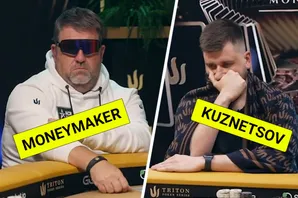The WSOP.com bracelet series in Pennsylvania descended into complete farce on Tuesday evening. The $3,200 No-Limit Hold’em High Roller (Event #3) had already been rescheduled from the week before due to unspecified "technical difficulties". Some had suggested those difficulties revolved around a WSOP bracelet event having only 19 entrants immediately before the scheduled start time.
But whatever the reason for the initial postponement, WSOP.com is now likely wishing they had simply abandoned the event.
Brandon Hall seems to have been the first player to notice that there was something seriously strange with the pay-out structure. He tweeted:
"If the PA $3200 bracelet event gets to 61 runners are we really going to pay out 36 spots???"
When registration finally closed after six hours and 66 unique entries, the client lobby clearly indicated that is precisely what WSOP.com was proposing to do.
To pay out more than half the field (or 42% of the number of entries accounting for second bullets) is completely unheard of. Part of the reason such a structure is plain daft was illustrated by the actual prizes. Finishers thirteen through thirty-six might have technically cashed in the tournament, but all lost money.
Poker.org decided to wade through the WSOP.com website hoping to find an explanation for this bizarre situation.
And we did. Someone really screwed up.
WSOP.com has pay tables for its MTTs. These tables indicate how many players get paid for a given field size, and what each finishing position pays as a fraction of the total prize pool.
There are three such tables for 10%, 15% and 20% of the field receiving a prize. Comparing these numbers to the actual pay-outs in the WSOP high roller event immediately reveals that something is amiss. More accurately, anyone with the slightest common sense can see the pay-out structure is ludicrous, but it also completely diverges from WSOP.com's own published information.
In Brandon Hall's tweet, we see that 60 entrants lead to 9 places being paid, whereas incrementing to 61 unique entries boosts the number massively to 36 paid places. This makes absolutely no sense and results in the comical situation of two thirds of the lucky winners losing money.
A comparison with the pay-out tables that WSOP.com claims to use for MTTs points to the origin of the problem. Once 150 entrants are reached, the number of places paid increases for every additional 50 entrants. This is apparent in the pay-out table for the PA event, where a field of 251-300 entrants was scheduled to pay the top 45, whereas 301-350 increases that number to 54.
But we also see something else in the pay-out table shown in the WSOP PA client for this event. Namely, we see a huge band from 61-250 entrants that includes the actual field size.
Again, based on information on WSOP.com's website, six jumps in the number of players being paid somehow got rolled into one. The number of places paid is supposed to edge up gradually, as the number of entries passes through the following bands: 61-75, 76-100, 101-125, 126-150, 151-200 and 201-250. With these bands somehow getting merged into the monolithic 61-250 seen in Brandon Hall's tweet, the number of places paid shot from nine to 36.
So what should have happened if WSOP was following its published pay-out structure? Once the number of entries hit 61, the number of places paid should have edged up from nine to ten. A perfectly sensible increment in line with industry standards. That it jumped to 36 instead strongly suggests someone miscoded the client for this bracelet event.
And as a result, WSOP.com is left blushing at perhaps the biggest blunder in the company's error-prone history.
Featured image source: Twitter

































